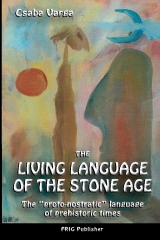Numbers
The Hungarian language is interwoven with numbers
Dealing with numbers, using them and writing on a daily basis since archaic times is reflected in the Hungarian language.
SZÁM = number
SZÁMukra (for their number = for those people) meant a lot being taken into account (we just can’t tell it differently):
| SZÁM|bavették. (took him into account) SZÁM|omra: for my number (for me) SZÁM|ba vesznek <saambavεsnεk> (they consider me) SZÁM|bavétel (taking into account) SZÁM|OT kapok (I will get a number), after this they SZÁM|olnak velem (they count on me) and I may become a SZÁM|ottevő <saamottεvoe> (considerable) person. SZÁM|ítok (I count) they take me seriously. If I did something wrong, then I may become a SZÁM|űzött <saamuezoett> (a person with lost number, banished), SZÁMkivetett <saamkivεtεtt> (my number being discarded), therefore, I won’t count anymore: Nem SZÁM|ítok. Somebody will be called SZÁM|beli, if he belongs to the society of people with a number) |
We just can’t say it differently
Our word Szem (eye) is in reality the fi gurative variety of the word identical entities:
| SZÁM|ol = SZEM|el <saamol = sεmεl> (calculate – select) SZÁM|lál = SZEM|lél <saamlaal = sεmlel> (count – view) SZÁM|oz = SZEM|ez (paginate – inoculate or ogle) Saying SZEM|es <sεmεsh>, we may think of a cute person or a grainy forage. If somebody SZEM|ez <sεmεz>, he/she may look at something interesting or take out cherry-stones. One SZEM of grape = one SZÁM (piece) of grape. |
The idea of One is standing behind this equality.
SZÁM = SZEM = 1 = MAG. This equality is expressed in the sign below
The SZEM|es takarmány (grainy forage) is stored in the MAG|tár <magtaar> (granary). I am EGY (one) SZEM (eye, number) MAG|am (myself) EGY|edül <εdjεduel> (lonely), like EGY SZEM MAG (one piece of grain) in my hand. Further more, all these are adjectives of God as well. In our philosophy exists only EGY (one) SZÁM (number): the ONE and all other numbers are only the fragments or multiples of EGY (one).
God is therefore MAGa (self) the ONE.
For the Sumerians the light and life-spending God was living behind the sun (it wasn’t the sun) and they called him SZEM|es <sεmεsh> (the being with an eye). The sign of SZEM|es was the circle with a dot. This sign has been in use 6-7 thousand years ago in the Carpathian Basin with other “pre-Sumerian signs”, found in the excavations by Zsófia Torma at Tordos, Vincsa, Tatárlaka (Transyvania/ then Hungary – now Romania). Later on it became a triangle with a human eye in it.
See more of this in the book:

